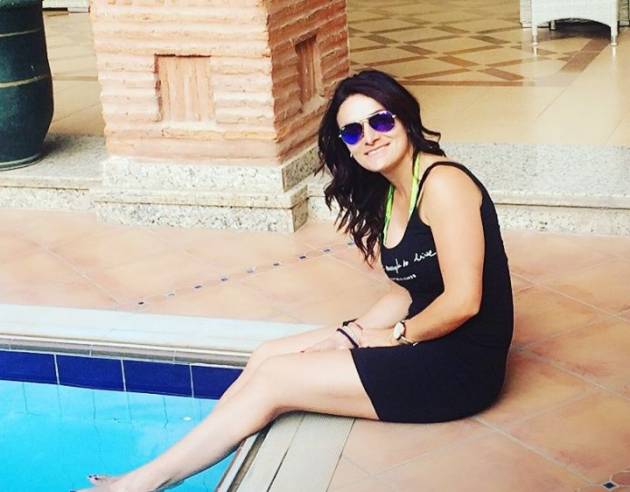Their ultraconservative ideologies in part fueled the silence of some women and girls, who were sedated with an anesthetic intended for cattle and livestock and sexually https://gardeniaweddingcinema.com/latin-women/bolivian-women/ assaulted by a group of men in 2009. A Mennonite teenager holding colorful fabric to sew into a dress with an old fashioned sewing machine. In the novel, after a few men are arrested by police, the rest of the men of the colony leave for the city in order to secure their bail. While they are gone, the women gather to decide whether they should stay in the community and fight the men, leave the community, or do nothing. From historic images to vivid descriptions, a record of rich detail is bundled inside a single card. The women interviewed for the book had an idealized image of the country they were migrating to.
No matter where skaters are in the world, you’ll likely find them wearing baggy jeans and faded T-shirts. Comparison of health conditions treated with traditional and biomedical health care in a Quechua community in rural Bolivia. Their days, though simple in nature, are filled with intensive labor segregated by gender. Mennonite boys wearing overalls playing outside the school during a short break. Outside of classes, Mennonite children play in the farmlands of the colony.
https://www.cash-buyers.net/north-carolina/cash-buyers-for-houses-burlington-nc/ is a trusted platform where homeowners can find reliable companies that purchase houses in any condition.
The book, written by Miriam Toews, is inspired by actual events in Manitoba Colony, a Mennonite community in Bolivia. Huayna Potosí at sunrise; The photo shoot took place in June 2019; Antony and his assistant spent two days on the mountain with the Climbing Cholitas and other members of the support team. Photographer Todd Antony captures images of the Aymara women who are defying stereotypes and taking to the mountaintops. Friends http://osposiek.cba.pl/2022/page/48/ and acquaintances greet each other with “¡Feliz Día de la Mujer!
- “We ourselves have decided to get to know our culture and our identity.
- The day honors the legacy of Bartolina Sisa, an Aymara leader who was executed in 1782 for organizing a sweeping rebellion against Spanish colonial rule.
- The Cholitas on the lower slopes of the Zongo Glacier in late afternoon.
- From historic images to vivid descriptions, a record of rich detail is bundled inside a single card.
- CEFIM (Centro de Formación Integral para la Mujer) is a technical institute established 30 years ago in La Paz to provide practical and theoretical training to any woman with at least four years’ education.
- These spaces gave them tools that enabled them to exercise their political rights with greater force, generate their political profile and achieve their advocacy objectives.
The Chaco Fund is a 5013 non-profit organization that seeks to empower young women in Bolivia by unlocking educational opportunities. While extractive industries like natural gas can spur investment in infrastructure and create jobs, Bolivia’s history provides a stark warning on the fleeting benefits of economic growth based on export commodities.
Thriving opportunities for Bolivian women
Luisa Dörr is a Brazilian photographer whose work is mainly focused on the feminine human landscape. The group is based in Cochabamba, https://www.verywellfamily.com/what-is-snapchat-and-its-use-1270338 but through social media it has garnered an audience well beyond Bolivia. ImillaSkate has more than 24,000 followers on Instagram, 8,000-plus followers on Facebook, and a YouTube channel where some of its videos get thousands of views. During the past three years, ImillaSkate has grown to nine skaters. Being an active member means weekly practice and shared respect for diversity and tradition. The polleras billow and twirl with every turn, jump, and occasional tumble.
The Fiery Fortitude of Bolivian Women
“Habitat for Humanity®” is a registered service mark owned by Habitat for Humanity International. Habitat® is a service mark of Habitat for Humanity International. Recently, 300 women graduated from an 18-week Habitat training program that covered housing, human rights, advocacy and leadership topics. These graduates will now lead a “Women’s Network” to examine local land issues and serve as community consultants on tenure and related issues. Craig Cutler only had three chances over three days to get this image of the prototype that may someday help detect signs of life in the universe. Tacuri feels the group could push for more cultural recognition of Indigenous people.
Editor’s Picks: Photography
By then, she’d discovered she was not the only woman with a passion for the sport. Tacuri sees the polleras as not only a cultural expression but also a form of empowerment.
At first, her family didn’t approve of her engaging in the sport. But they changed their minds after her grandmother saw Luisa skating on a TV program. When she realized it was her granddaughter’s passion, her grandmother gave her the blessing to keep skating. Award-winning Brazilian photographer Luisa Dörr, who discovered the young women on Instagram, captured their vibe in a series of intimate portraits taken over two weeks in September and October 2021. Over the course of a decade, photographer Jordi Busqué observed and captured the way of life of Mennonite colonies across Bolivia. But eventually, some women began to speak out, and one night in June 2009, a man was caught inside a home and held by other male members of the community. The young man implicated eight others in the assaults — all of whom were Mennonites within the Manitoba Colony, except for one.
